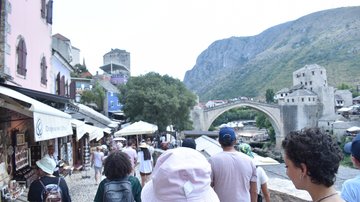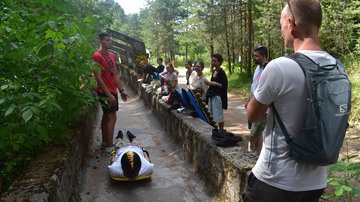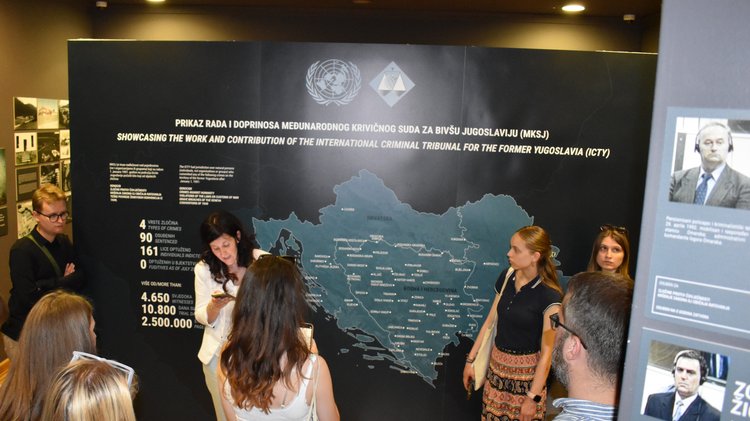Against forgetting – Remembering Srebrenica
Against forgetting – Remembering Srebrenica
Facts and figures regarding the youth encounter:
- Dates of the project: 28th June – 7th July 2025
- 26 participants from four countries: Bosnia and Herzegovina, France, Germany and Slovenia
- Age: 18 to 26 years
- Programme highlights: Srebrenica-Potočari Genocide Memorial Center; Historical Museum of Bosnia and Herzegovina (BiH); Museum of the Jews of BiH; Reception by the mayor of Sarajevo; Sarajevo City Hall – Sarajevo Information Center on the International Criminal Tribunal for the former Yugoslavia; War Childhood Museum; “Sarajevo Scrapbook” Museum; Museum of the Battle for the Wounded at Neretva – Jablanica; Herzegovina Museum Mostar
- Cooperation partners: Education Builds Bosnia and Herzegovina - Jovan Divjak, Les Francas (ESC Croix des Oiseaux), National Youth Council of Slovenia, German War Graves Commission; City of Sarajevo; French Institute Sarajevo; Goethe Institute Sarajevo; Municipality of Stari Grad – Sarajevo
> Click on the photo to open the gallery
The youth exchange “Against forgetting: Remembering Srebrenica” took place from June 28 to July 7, 2025, in Sarajevo and Srebrenica, Bosnia and Herzegovina. The exchange gathered young people, youth workers, multipliers, and professionals in historic education. The age range was diverse, including high school and university students and young professionals. The event was designed to foster intercultural dialogue, critical reflection on history, and active youth participation in remembrance culture.
We started in Sarajevo with introductory sessions, ice-breakers, and language animations that promoted intercultural communication. The first days combined workshops with historical input and allowed to gain an overview of conflicts in Bosnia and Herzegovina. The group visited the City Hall, the ICTY information centre, the Historical Museum of BiH, and made a guided walk through memorial sites in Sarajevo. A key element of the programme was the one-day visit to the Srebrenica Memorial Centre where participants engaged in guided tours, educational sessions, and personal reflection on the legacy of genocide and war crimes. Visits of the War Childhood Museum, the Tunnel of Hope, and the “Sarajevo Scrapbook” memory room unfolded the life conditions under the Siege of Sarajevo.
At the French Institute in Sarajevo, we explored the ways in which Germany and France dealt with the legacy of World War II, and reflected on the importance of the Élysée Treaty for reconciliation and trust building. At the same venue, a special discussion was held with a representative of the Jewish Community in Bosnia and Herzegovina. This conversation focused on Jewish life in Bosnia and Herzegovina before, during, and after the war of 1992–1995, with particular attention to the rise of anti-semitism in Europe in the last years. We also joined the “Jerusalem of Europe” walking tour, visiting various religious landmarks and the Jewish Museum.
Creative workshops at the Goethe Institute introduced innovative methods of remembrance, such as building a memorial AI and curating exhibition work. An excursion to Jablanica and Mostar broadened the perspective by exploring the Memorial complex “Battle of the Neretva”, the Old Town of Mostar, the Museum of Herzegovina, and the Partisan graveyard. All the memorial and museum visits provided insight into how memory is preserved across different regions of Bosnia and Herzegovina.
In the final days, we concentrated on the completion of our exhibition part and the podcast episode. Evaluation sessions and reflection on personal learning outcomes ensured long lasting effects. The farewell gathering strengthened the bonds among participants and encouraged their role as future ambassadors of remembrance and peacebuilding.



